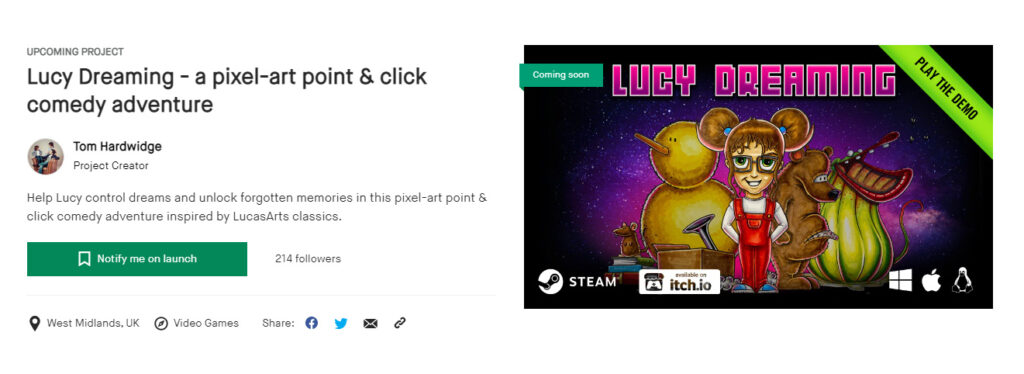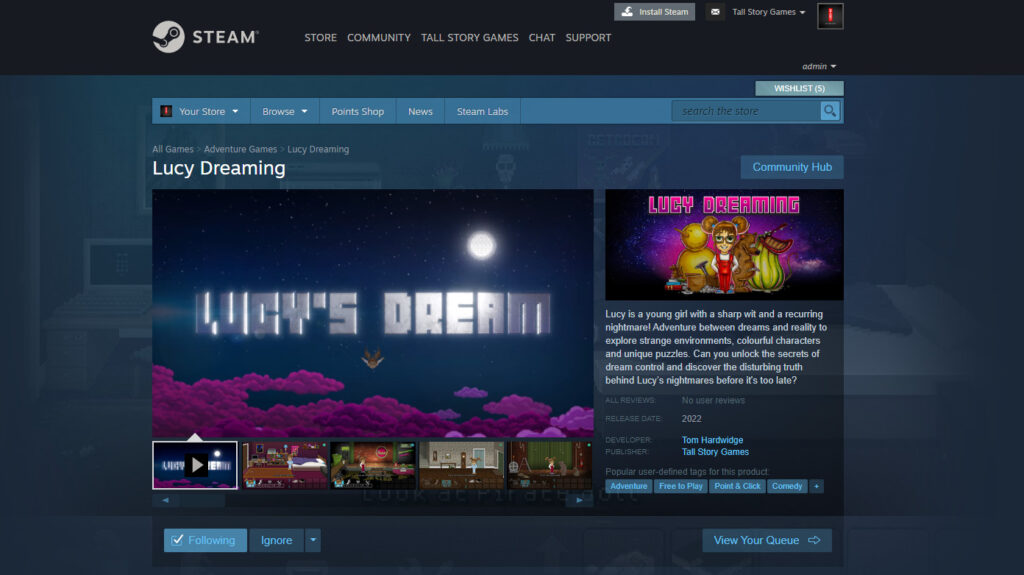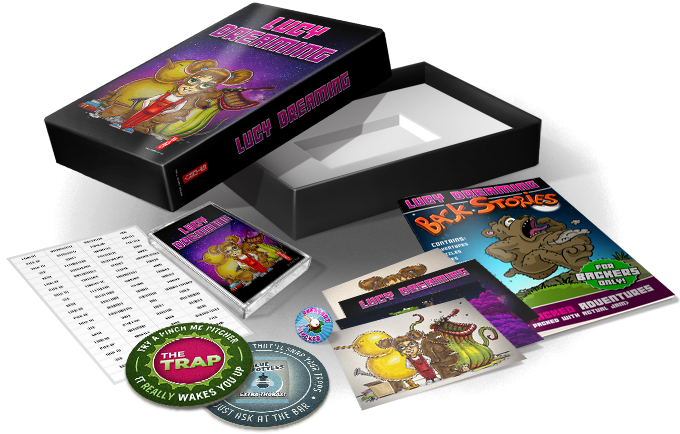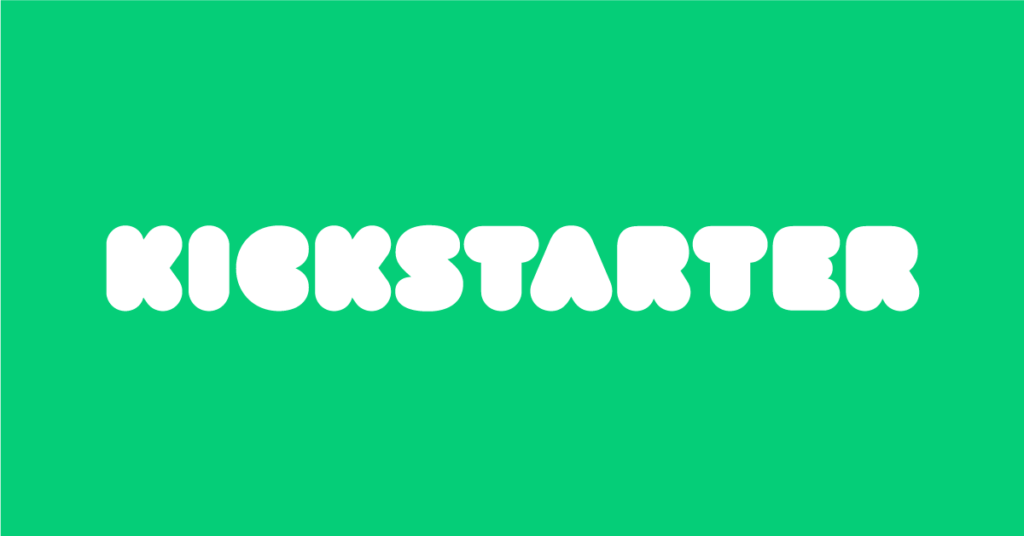I’ve not written a blog post for a few weeks, the main reason being that I’ve been getting a row of ducks organised for launching the demo, promoting it, and subsequently making sure all of my figures add up for the forthcoming Kickstarter campaign.

During this process, I also decided to launch Hair of the Dog on Steam too, AND launch both the Lucy Dreaming Demo and Hair of the Dog on Android, just because I haven’t already got enough to do!
This is quite a long post as it covers some of my experience with both Steam and Kickstarter but, even so, it is by no means comprehensive! A LOT has happened recently!
Here are a couple of things I’ve noted this month.
Launching on Steam is not straightforward.

I’m not a naturally technical person. I’m a cobbler. I cobble. If I have some decent video tutorials or source files to work with I can generally get things to work. I’ll gradually change and delete things until whatever it is stops working, then revert back again.
This gives me a superficial understanding of a lot of things, but seemingly the obvious and simple foundations often pass me by. When I chat to “real” developers I try not to reveal the fact that I still have literally no idea how GitHub works.
I brazenly assumed that publishing a game to Steam would be more or less similar to publishing on Itch.io and GameJolt (i.e. you upload a ZIP and hope for the best). Alas this is not the case.
With Steam you are forced to grapple with their nomenclature (steampipes, valves, steamworks etc.) in a variety of spaces and subdomains. This can appear pretty daunting, and if it wasn’t for the support of the Visionaire community (specifically @PRIM_adventure and @DionousGames) I’d have been at a complete loss at where to start.
Here’s a massively over-simplified overview of the process:
- Create an App (game) – log into your Steam account. You have a Steam account right? If you don’t, go and do it now because you’re going to need to set stuff up weeks in advance of your launch date, due to their “The longer you wait the more legit you must be.” policy.
- Set up your App’s store page – this is the nice, easy part, although you need to prepare yourself for an unintuitive UX while uploading the 9 billion different image assets required.
Sometimes you need to submit the whole page in order to save form fields, sometimes they are handled in a separate window, sometimes it’s submitted silently with AJAX, sometimes you need to publish, sometimes you don’t, sometimes you just need to be wearing the right kind of socks. It’s all a slowly-refreshing mystery.
There are also multiple places you can publish, and I’ve still never quite worked out which one is which, so I systematically press every “publish” button I can find, just to make sure. - Create Depots – These are apparently the virtual spaces where your game files will be stored for each different platform you are supporting (Windows, Linux, MacOS etc.) – You’ll also need to link them to the right location for each “Build” (see below).
- Upload Builds into your Depots – this is where things get complicated.
You need to download and unpack the Steam SDK (I still don’t know what an SDK is… possibly Simply Don’t Know)…
Then copy your game files for each OS into a specific directory within this mass of complex files and other stuff on your local machine…
Then download the SteamCMD programme (which is essentially a command line interface like I remember DOS being when I was eight years old) to upload your files into the right “Depot” on Steam’s server.
Tip: If you have trouble logging into your account via SteamCMD, quit the Steam programme on your machine – it doesn’t like having both programmes logged in at the same time.
I eventually found some videos which talk you through the process, but even then they assume a bit of prior knowledge and it’s honestly really daunting the first time you have to go through it.
Once you’ve done it once, it’s dead easy. I actually launched Hair of the Dog first, and it took me almost a week to get to grips with everything. the Lucy Dreaming Demo then only took me a couple of hours.
At every turn you are faced with acronyms, more names for things you’ve never head of before, and no real idea of how far down the tunnel you are or have left to go.
But…you CAN do it!
It’s painful, but I can confirm that it is technically possible.
Calculating Kickstarter rewards is also not straightforward.

I have a spreadsheet. It has lots and lots of columns in it showing costs for each and every component of a each and every backer reward.
It has shipping, it has packaging, it has minimum order quantities, it has taxes, it has fees, it has contingency and it has a whole other tab just to hold the tears I shed whilst trying to make sense of it.
The issue is that everything is on a seesaw.
When one number goes up, others come down, and there are tonnes of unknown factors, especially if it’s your first ever crowdfunding campaign (which this is for me).
If you have physical rewards then you need to have an idea of how many you can afford to produce – if you manage to fund JUST with physical rewards, is the profit margin high enough to leave you with anything at the end of it? They’re cool (I mean really cool), but are they worth it?
Another thing with physical rewards is that they often become much cheaper to produce (per unit) if you have larger quantities, but then you’re eating into your profit margin to an unknown degree. So, do you offer unlimited quantities of them – which could potentially devalue them to your backers? Or do you limit them, knowing that if you will probably have to charge more for each reward (or settle for a lower-quality product) if you don’t have the buying power that a higher order quantity would afford you.
Then there’s shipping…
Do you include it, or add it on at the end?
Will this put backers off?
How many shipping rates do you include?
Honestly, the list of questions and unknowns is…well unknown…but it’s big.
Kickstarter also now offers “Add-ons” which are a great way to simplify your reward levels. You can essentially launch with maybe three reward levels (Basic, Medium, Premium) and any fancy rewards, like “One of the developer’s fingers”, can be moved into the “Add-ons” section, strictly limited and added onto any pledge.
Sounds great, now I don’t need to have 20 different reward level combinations to organise…right?
Hmm…the jury’s out on this front. From all accounts the process for adding Add-ons to a pledge (or God-forbid actually amending a pledge at a later date) is ropey and unintuitive for backers, and could potentially put them off.
At the time of typing, I’m going to risk it and put my faith in Kickstarter’s new Add-on system. But I’m also doing so in the knowledge that I could be setting myself up for a lot of work in the Kickstarter Updates, while I try and explain and justify the Add-on process to everyone who falls foul of Kickstarter’s user interface.
Let’s see how it goes!
UPDATE:
I’ve changed my mind.
I’ve looked in more detail into the way that Kickstarter’s add-ons work from a backer’s point of view and it’s so convoluted that I’ve decided to go with a set of eight reward levels instead.
I have backed another couple of games on Kickstarter recently on my phone, and realised that I didn’t even bother to read the “Story” section of the campaign at all. I watched the video, scrolled to an appropriately-priced reward and threw my money at them. Add-ons during this process would have been even more confusing and most-likely overlooked.
I assumed that an “add-on” would be just that, like an additional purchase made at the checkout. Nope. As a backer you have to go into the “Manage your pledge” section, and manually edit the amount of your pledge to take into account your original reward amount, any additional shipping costs and then the add-on amount on top of that. It’s all just a bit weird in my opinion!
Kickstarter is not as famous as I thought!

I honestly thought that Kickstarter was ubiquitous. I backed my first project almost ten years ago and as a crowd-funding platform it has been on my radar for over a decade. I kind of assumed that this was the case with most people. But apparently as someone working in the creative industries, I live in a Kickstarter echo chamber.
Most of my friends and family simply haven’t heard of it. So a certain amout of educating needs to be done at the promotional stage. Simply referring to a “Kickstarter launching” is fine when you’re preaching to the converted, but for the most part it’s going to need to be more along the lines of “Help support a brand new adventure game” or “Become a video game producer for only £XX”, and not relying on Kickstarter’s brand to do the heavy lifting with the message.
With Lucy Dreaming, I want to try and reach a wider audience than hardcore adventure gamers. Obviously they will form the core of any successful point & click Kickstarter campaign, but I want to reach people who have a nostalgic love for games they remember from their youth, but don’t realise that similar titles are still being produced by indie developers.

One article that brought this to my attention was promoting another of last year’s AdvXJam entries “Loco Motive” in PC Gamer. Here was a tech/gaming journalist realising that these kind of games were still out there, and loving it. Someone who I would have assumed already knew that, and just wasn’t all that bothered. If someone writing for a leading games magazine can be schooled on the presence of new, retro, point & click games in the marketplace, how many more people are there out there in the same boat?
With the tone of Lucy Dreaming, I think that I can appeal to UK consumers (not necessarily gamers) specifically. The humour is quintessentially British, and there is an un-tapped market out there for people who just don’t realise that new point & click games exist.
In addition to this, the format of a SCUMM interface really lends itself to touchscreen/mobile devices, which is why I’ve been making an effort to produce my games on Android too (iOS to come, but I need to buy/rent a Mac first). This hasn’t required an awful lot more development and, if promoted correctly, could help to put the genre in front of a lot more potential players. I know this is not revolutionary, and I am not saying something that hasn’t been said by thousands of indie devs and games marketeers before me, but it’s a cherry that I want a bite of!
Follow me follow me follow me
A lot of people don’t realise that you can follow a Kickstarter project pre-launch to be notified when it goes live. That way they can have first choice on any early-bird rewards on offer (hint hint).

